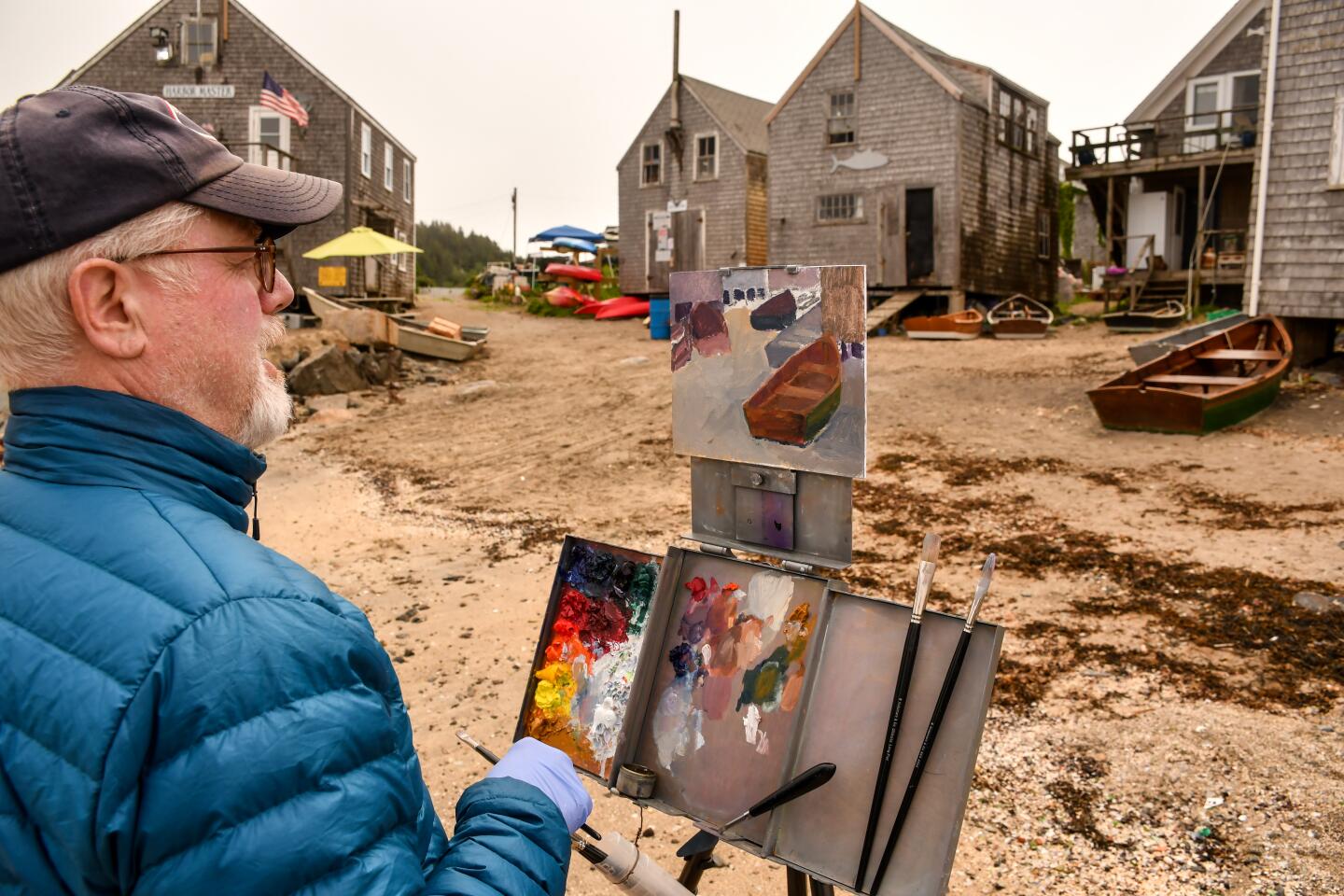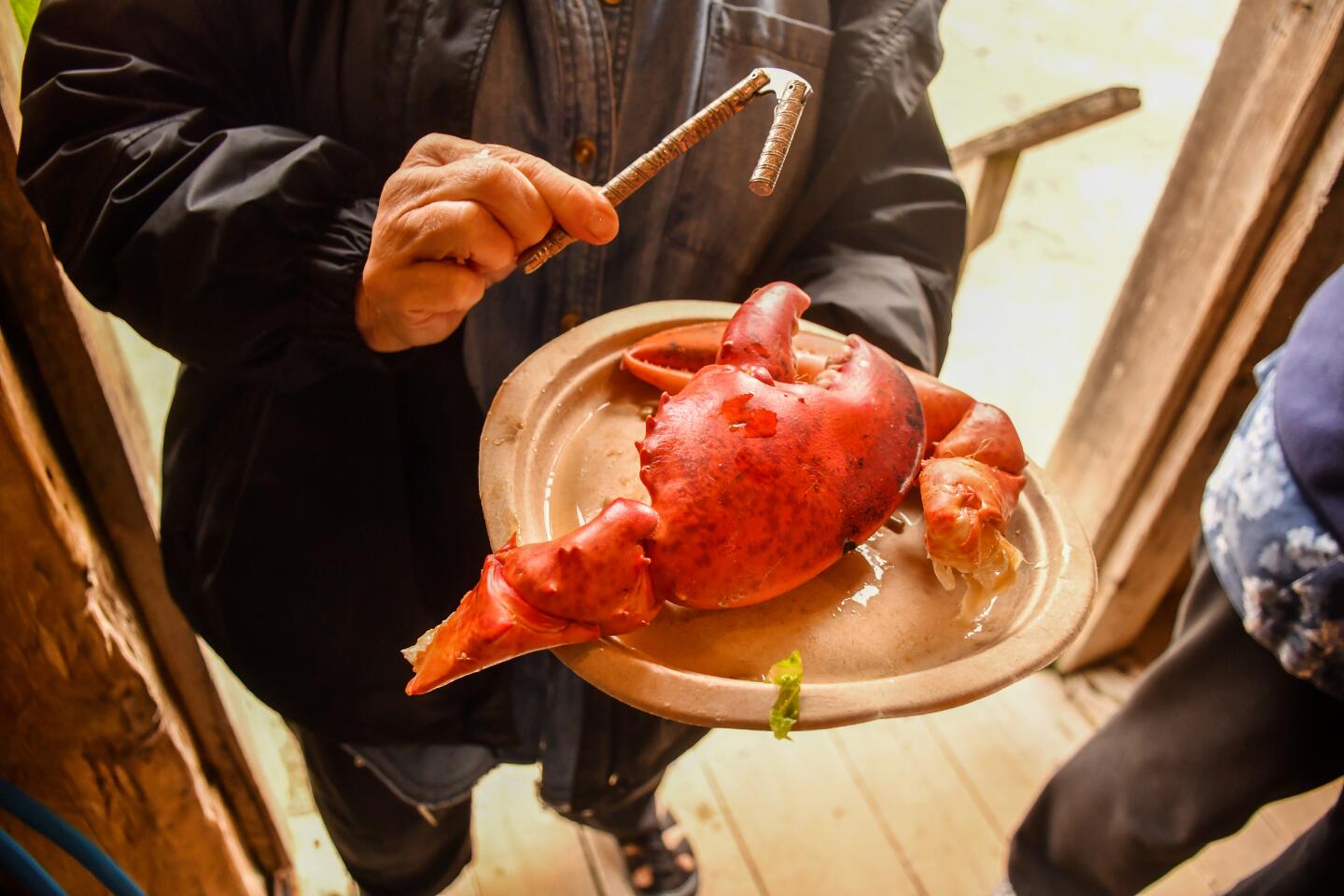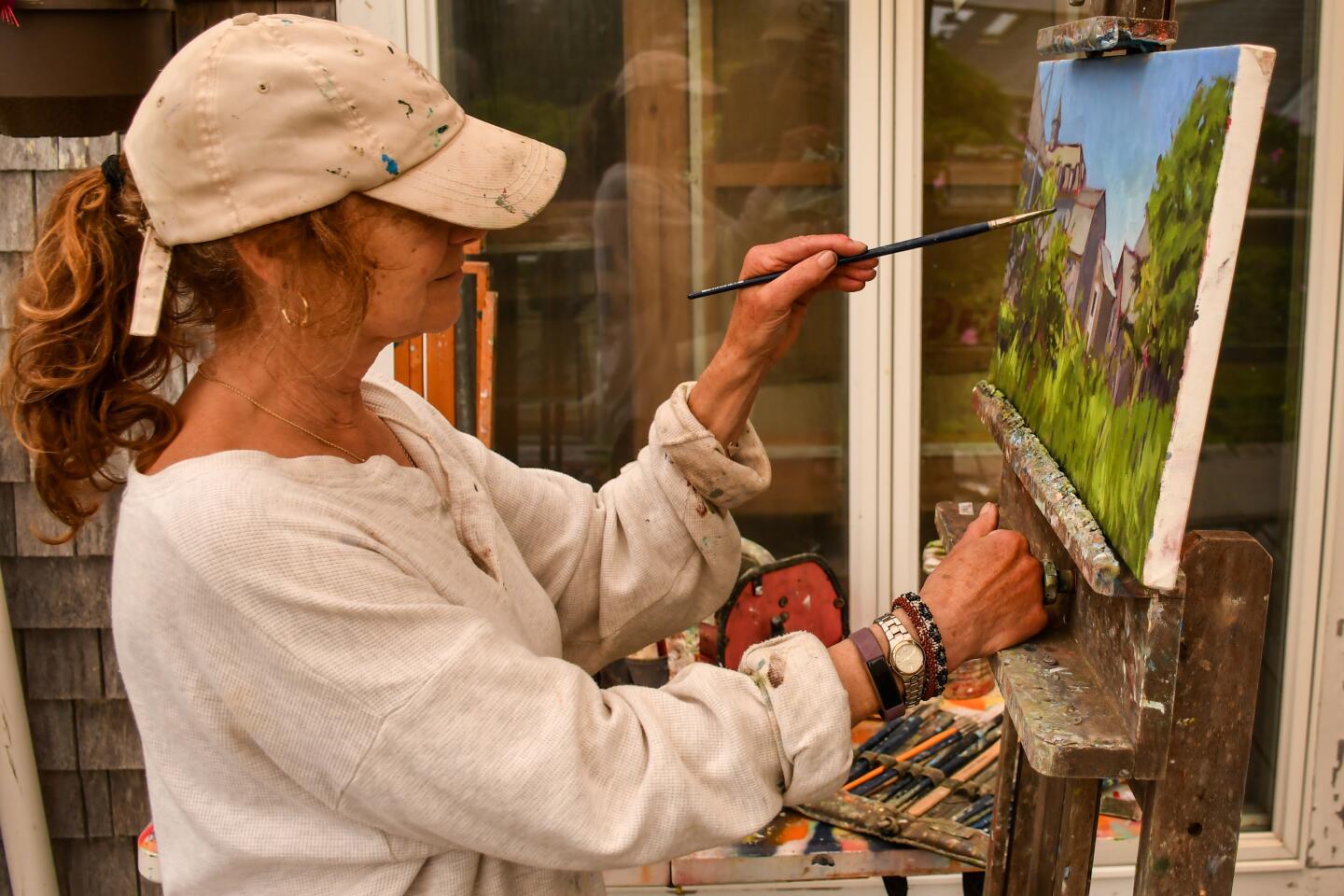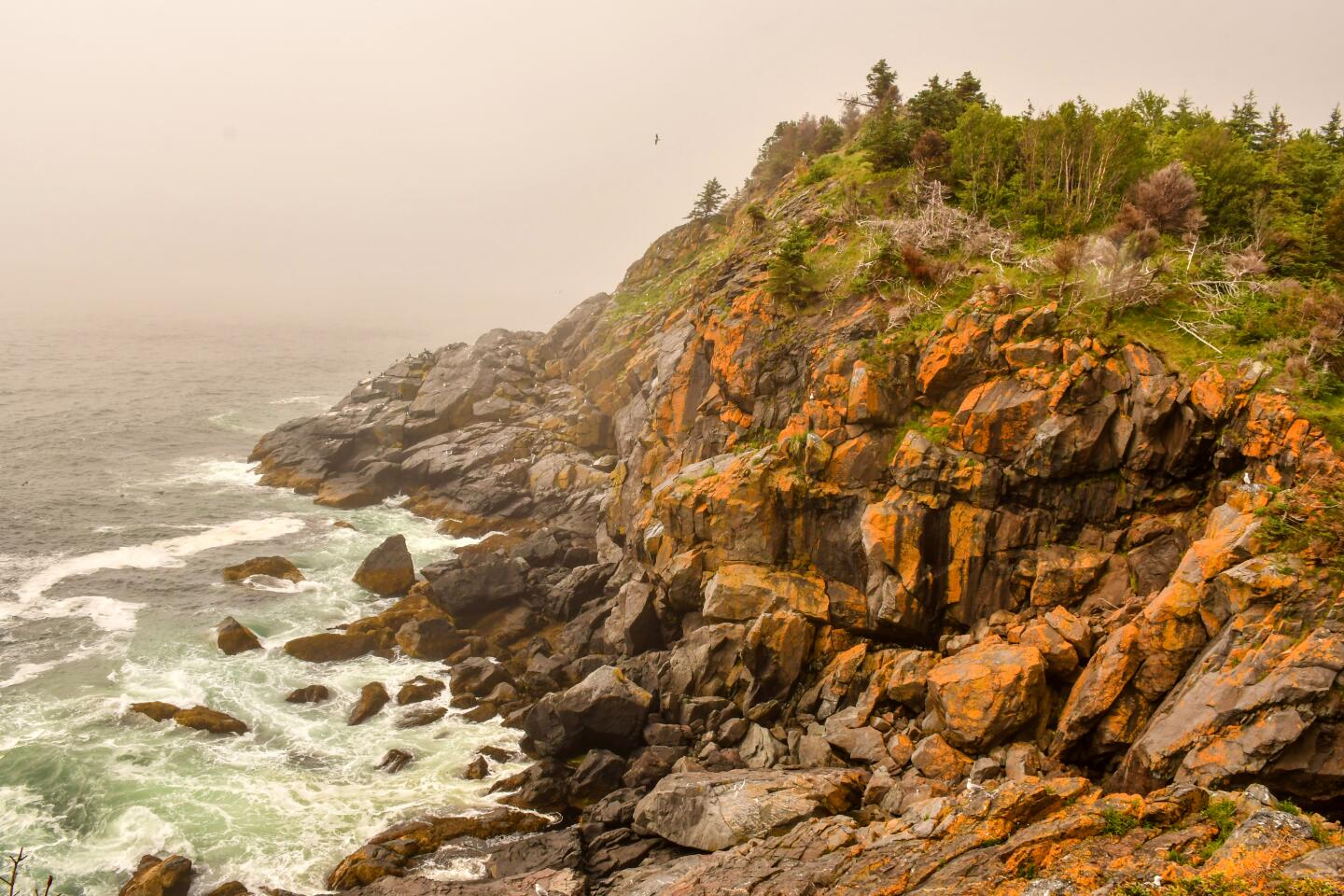Maine’s scenic Monhegan Island is a portrait of Brigadoon mixed with L.L. Bean
Eleven miles off central Maine, a duck bobs in shallow water near a rocky island shore. A 19th century lighthouse rises nearby. Three painters drag their easels onto the beach. A lobsterman tinkers in his shack.

This is Monhegan Island, cherished throughout New England for its scant size and population, weather-beaten buoys and wayward stacks of lobster traps. These are landscapes you’d expect a Wyeth or Edward Hopper to paint, and indeed they have. The place looks today largely as it did a century ago: no cars, no paved roads.
But like that duck in the shallows, Monhegan is always churning beneath the surface. This makes it not only a gorgeous destination but also a fascinating one, especially if you’re accustomed to California coastlines and bigger cities.
I arrived by ferry on a Tuesday morning in June, eager to see Monhegan stem to stern, a little worried I might finish before lunchtime. The island is less than two miles long and less than a mile wide, with no airport, police, doctor or bank, but plenty of well-worn Red Sox caps. Population drops to 65 or fewer in winter, when snow falls and the few remaining lobstermen set out their traps.
But the warmer months are different. In spring and fall, birders show up, eager to catch song birds mid-migration. The island is fully awake June through September, when the population increases to perhaps 250 seasonal residents, joined by scores of day-trippers and short-term visitors.

Maine’s Monhegan Island is less than 1 mile square, but has an outsized reputation for its lobster fishing commuinty, its history as an artist’s destination, and its striking beauty. As this video shows, it’s a great summer destination.
That modest tourist tide is enough to sustain three summer-only inns, a handful of summer-only restaurants, one or two bed and breakfasts and assorted rental homes. In other words, it’s Brigadoon with shellfish and costume design by L.L. Bean.
Like summer people everywhere, these visitors hike, read, eat outside, huddle over jigsaw puzzles and dawdle by the water. But by long Monhegan tradition, many also paint. On any day, you’re bound to find a dozen or more artists with their easels and nearly as many tripod-lugging photographers. More than a dozen painters and sculptors keep island studios with regular summer visitors’ hours.
“I used to do only portraits,” said Alison Hill, who moved to the island full time in 2002. “Then I started doing landscapes because you have to. It’s so beautiful here.”

“You get this mist, this atmosphere, that intensifies the colors,” said Jack Hobbs, who had come from Massachusetts to set up his easel at water’s edge.
Even if you’ve never heard of Monhegan, there’s a good chance you’ve seen it on a museum wall. Artists have been visiting since the 1850s, including a great burst between 1895 and 1920 when Robert Henri, George Bellows, Alice A. Swett, Maud Briggs Knowlton, Edward Hopper and Rockwell Kent, among others, came to paint.
Back in the day
The ferry that delivered me, the Laura B, a 65-foot wooden boat, has been carrying mail, passengers and freight from Port Clyde since 1954. The dock doesn’t look much different from what it did when Robert Van Vorst Sewell captured it on canvas in 1916. The same goes for the nearby red house on the rocks, which Jamie Wyeth put front and center in an early 1970s watercolor.
The 19th century lighthouse and keeper’s residence dominates the landscape just as they did when Hopper painted them during his four island summers, 1916 through 1919. Those buildings now house the deeply engaging Monhegan Museum of Art & History.
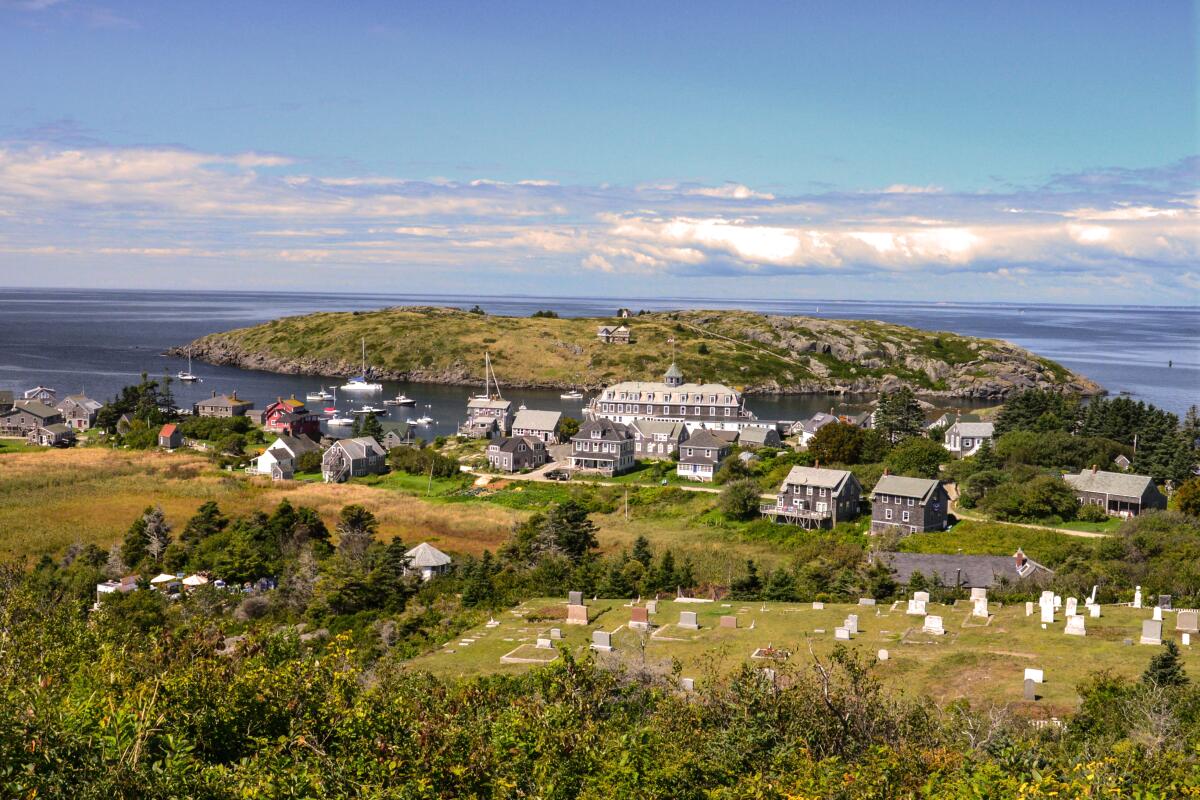
The village’s centerpiece is the Island Inn, where I stayed. It was built in the early 19th century, expanded in the early 20th and renovated in the early 21st by new owners who were wise enough to keep telephones and televisions out of its 32 guest rooms. (In another sign of the island’s rustic leanings, several of those rooms still share bathrooms down the hall.)
I sprawled for a few minutes on its porch full of white rocking chairs, then dined at the inn’s restaurant, where I had seared scallops, the tastiest meal of my visit. Lobster scramble was for breakfast the next morning.
That day, as I wandered widely, the ghosts of painters past followed me like a faithful retriever.
At Fish Beach, the gulls swooped and shrieked just as they surely did when Bellows painted it in 1913.
Out at Lobster Cove, the battered bow of the tug boat D.T. Sheridan, wrecked in 1948, was still stranded on the rocks, now much rustier than when Kent painted it in 1949.
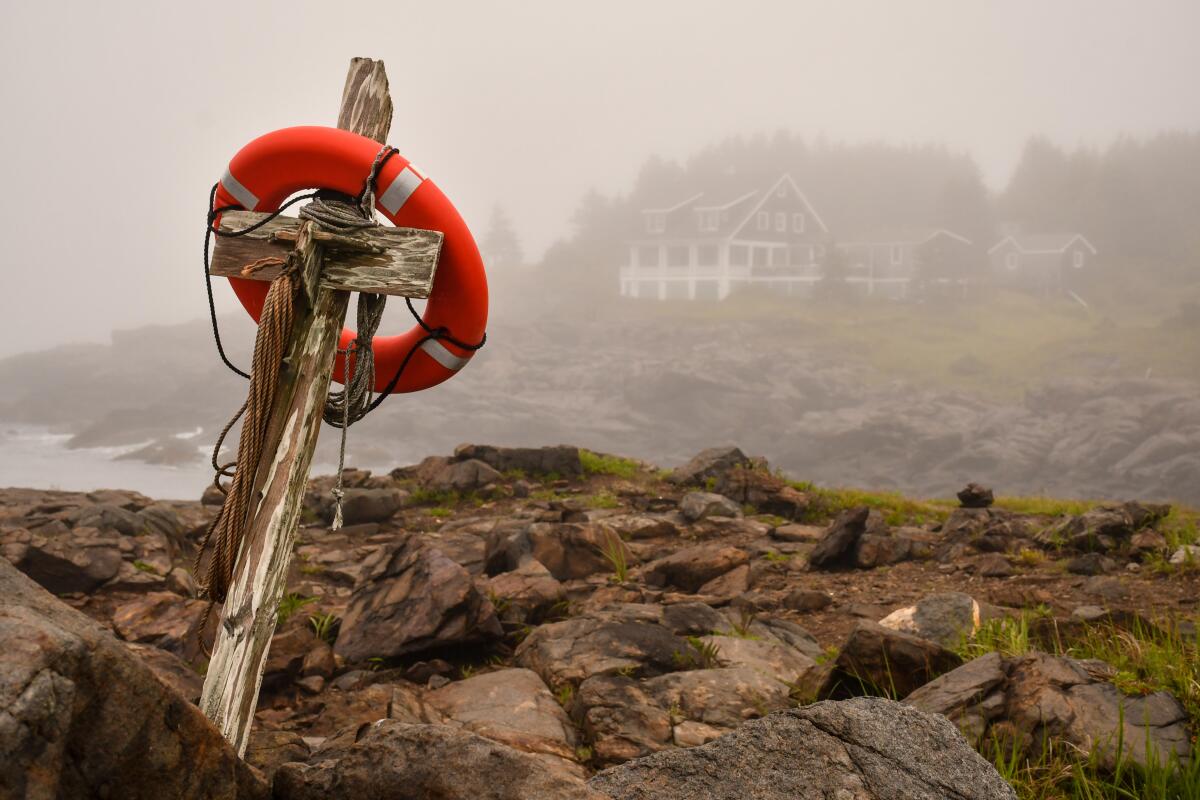
From the cemetery just below the museum, I had a wide western view of Monhegan’s tinier sidekick, Manana Island, which shelters Monhegan Harbor. This being Maine, “Manana” rhymes with “banana.”
There are plenty of great paintings covering the island’s surf-battered eastern edges too. But once I reached Gull Rock, Burnt Head, White Head and Black Head, the actual earth, wind, sea and sky crowded the artists out of my imagination.
Windswept 150-foot cliffs. Wave-lashed boulders. Narrow, muddy paths through dense forest. Wild strawberries demanding to be tasted.
If you end up in the roiling water on this side of the island, I heard a veteran hiker tell newcomers, “You’re dead. The waves will beat you into the rocks.” I found historical accounts from 1926 and 2011 that made clear he wasn’t joking.
Thanks to Monhegan Associates, a nonprofit created in the 1950s by Thomas Edison’s son, Ted, about 350 of the island’s 513 acres are protected as a natural reserve. That territory, including the rugged eastern edge, is crisscrossed by nine miles of well-labeled trails, along which smoking, drone flying, camping and biking are banned.
The island has about 12 miles of trails. In three days, I covered most of the network, circled the island, and met many fellow visitors, almost all repeaters, almost none from California. (Painter Doug Andelin, from the San Francisco Bay Area, was the exception.)
When you visit, you’ll want to cover the same ground. You’ll also want to browse the art at the Lupine Gallery and the Rockwell Kent-James Fitzgerald House & Studio run by the Monhegan Museum.
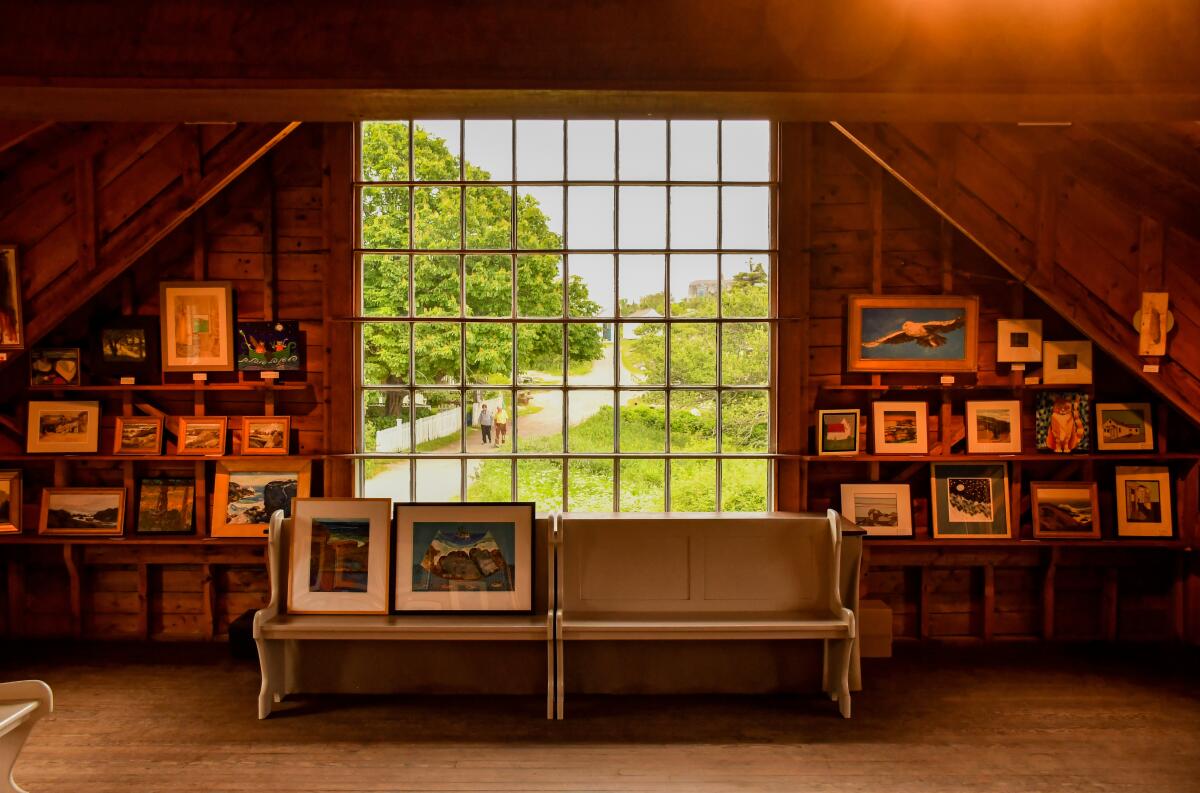
Look closely at the big boulder next to the island’s one-room schoolhouse: It commemorates a visit by Capt. John Smith in 1614, seven years after he founded Jamestown (in what was later Virginia), the first permanent English colony in North America.
If the seas are calm on the sheltered side of the island, you might rent a kayak at Fish Beach and paddle for an hour within the confines of the harbor.
Push and pull
If you’re as intrigued as I was by the island’s size and isolation, you’ll also find yourself questioning everyone you meet about what it takes to keep the place alive.
Every year, they told me, the residents elect three assessors to be in charge. A constable, also elected, keeps the peace.
The community’s annual report for 2018 shows 76 registered voters, five pupils in the one-room K-8 schoolhouse, four marriages, two births, one death and one arrest (a domestic disturbance).
The Monhegan Island Sustainable Community Assn., reports that housing costs have more than doubled since 2014, and that over the last century, the number of Maine islands with year-round populations has dropped from more than 300 to 14.
Yet in his book “The Lobster Coast,” Colin Woodard, writes that Monhegan remains “one of the few places in the world where the scions of great moneyed families are socially and politically outranked by persons who earn their living stuffing rotten herring in nylon bags in an effort to ensnare large bottom-feeding bugs.”
There is one ATM and one grocery store, traditionally left unlocked in winter in case somebody needs something.
In the immaculately kept Monhegan Memorial Library, you can pull up a chair and peruse two old National Geographic stories on Monhegan — one from 1959, one from 2001 — or perhaps the photo book on the hermit of Manana Island, who kept sheep and lived in a mostly driftwood house from the 1930s into the 1970s.
“The biggest change since I’ve been here? The telephones,” said longtime islander John Murdock. “We got telephones in 1983.”

Mary Kordak of Hamden, Conn., who has been coming to the island with her husband since the early 1970s, told me that when her children were little, “They refused to go to camp in a normal fashion. They only wanted to come to Monhegan. Now my kids are adults and they still come.”
Some long-timers do fret that the island is seeing fewer children and more retirees, and many visitors are staying for days instead of weeks. But newcomers do turn up.
“We found this place through Google. As soon as I got here, I got tearful,” Sun Park, a New Jersey music therapist told me over dinner at the Trailing Yew. “It’s magical and amazing. Things are at peace.”
Her partner, Alfred Lee, also nodded. This was their fifth year visiting, he said, and “I think we’ll be [coming] here for the rest of our lives.”

My pulse seemed to slow with every hour I spent on Monhegan. But for locals, it’s not always easy to keep Monhegan viable in winter and charming in summer without surrendering a bit of its soul.
This is what moved Ted Edison to warn in 1976 that “thousands of people can’t enjoy solitude together” and what causes the keeper of the island website to remind the world that “Monhegan is a village, not a theme park.”
For instance, lobsters have been central to the island’s character and winter economy for more than a century, but trapping them is becoming more difficult as fisheries fluctuate, regulations tighten and the number of working lobstermen on the island dwindles to about half a dozen.
“This might be my last year,” said Sherman Stanley, 72, as he rigged a buoy in his workshop above the Fish House. Stanley, a fifth-generation islander, put out 350 traps last winter. Next winter, “I might just set a handful of traps. I’ve had both hips replaced and one knee is about to go.”
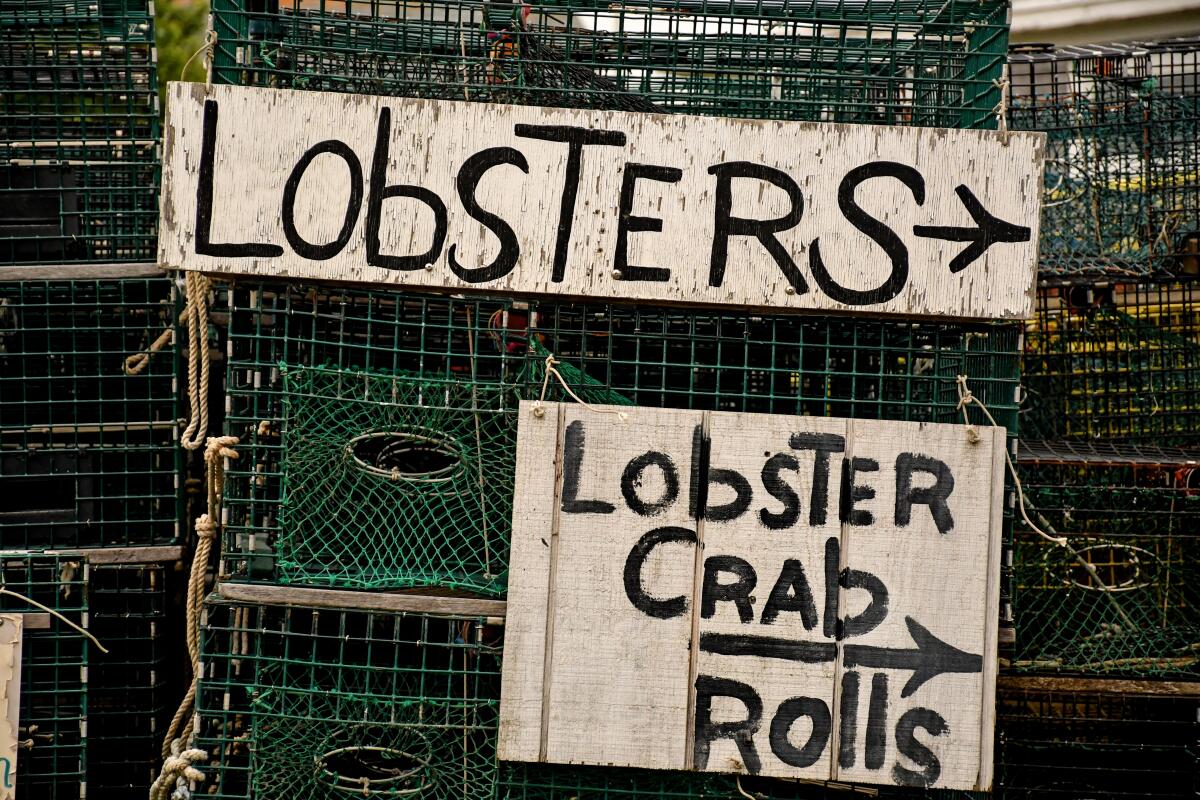
More signs of constant push and pull:
- Though cars are banned, everyone who has a business on Monhegan is allowed to have a truck. Your first view upon arrival will probably be the back ends of half a dozen trucks, collecting supplies and luggage. You’ll also discover that some folks are using golf carts to navigate the dirt and gravel paths.
- Many summer people here are quick to say how much they love being unplugged. But plenty sneak peeks at their phones, despite seriously iffy coverage. The island’s leaders, eager to make telecommuting easier, have been working on a boost in broadband that could mean big changes.
- The island is dry; no alcohol is served in restaurants, though you can bring in store-bought bottles and cans. But in 2013, Monhegan Brewing Co. started making beer and serving pints on its patio on summer afternoons.
The picnic tables are surrounded by a wall of blue-wire lobster traps, a hint that co-owner Matt Weber is a lobsterman. (It’s also his turn as constable this year.) The island’s lone food cart lingers nearby. Some guests bring string instruments and launch into French Canadian folk tunes. How did the island ever get along without this place? It’s unclear.
Meanwhile at the Trailing Yew, full electrification arrived this spring after decades of reliance on kerosene lamps.
But as office manager Christian Dederer was quick to add, this progress won’t be obvious at dinner. As per longstanding custom, the evening meal is conducted by candlelight at communal tables.
No matter what comes next in the perennial negotiations between Monhegan Island and the outside world, Dederer said, “That is not going to change.”
If you go
THE BEST WAY TO MONHEGAN ISLAND, MAINE
From LAX, American, Delta, Jet Blue United and Alaska offer nonstop service to Boston, and American, Southwest, Delta, United, Frontier and Alaska offer connecting service (change of planes). Restricted round-trip airfare from $347 round trip, including taxes and fees.
From Boston, catch a commuter flight to Rockland, Maine, or drive about 200 miles to Maine’s central coast to catch one of the three ferries that serve the island in summer. Reservations recommended. Check websites for departure dates and times.
Monhegan Boat Line, 880 Port Clyde Road, Port Clyde, Maine; (207) 372-8848. Two vessels sail from Port Clyde up to three times a day, $38 per adult round trip.
Hardy Boat Cruises, 132 State Route 32, New Harbor, Maine; (207) 677-2026.
Two departures daily to Monhegan from New Harbor, $38 per adult round trip.
Balmy Day Cruises, Pier 8, 42 Commercial St., Boothbay Harbor, Maine; (207) 633-2284. One departure daily from Boothbay Harbor, $42 per adult round trip.
WHERE TO STAY
Most of the island’s lodgings, restaurants and shops are summer-only.
Island Inn, Monhegan Island; (207) 596-0371. 32 rooms, eight with shared baths. Rooms for two $160-$445, breakfast included.
Trailing Yew, Monhegan Island; (207) 596-0440. Several houses and cottages with 30 rooms, three with private baths. Rooms for two $123-$198, breakfast included.
Monhegan House, Monhegan Island; (207) 594-7983. 28 guest rooms, two with private baths. The rest share 12 bathrooms. $150-$260, breakfast included.
Shining Sails Bed and Breakfast, Monhegan Island; (207) 596-0041. Open year-round, unlike other lodgings here. Includes seven units (five with kitchens), $150-$250 a night. Proprietors John and Winnie Murdock also manage other apartments and many cottages on the island.
WHERE TO EAT
Island Inn, details above. Monhegan’s fanciest restaurant, with evocative paintings of the island covering the walls. Dinner main dishes $28-$39.
The Trailing Yew, details above. Reserve in advance to join one of the inn’s casual, communal dinners. Wednesday is burger night. Thursday is Thanksgiving fare. The food is fine. The atmosphere and company in the 52-seat dining room make it special. Fixed price: $15-$31 per person, depending on the night.
Fish House, 7 Horns Hill Road, Monhegan Island. This beach-adjacent spot is a place to buy fish or grab lunch or early dinner. It’s all patio dining at picnic tables. Main dishes $8.50-$20.95, open 11:30 a.m. -7 p.m.
TO LEARN MORE
More to Read
Sign up for The Wild
We’ll help you find the best places to hike, bike and run, as well as the perfect silent spots for meditation and yoga.
You may occasionally receive promotional content from the Los Angeles Times.

